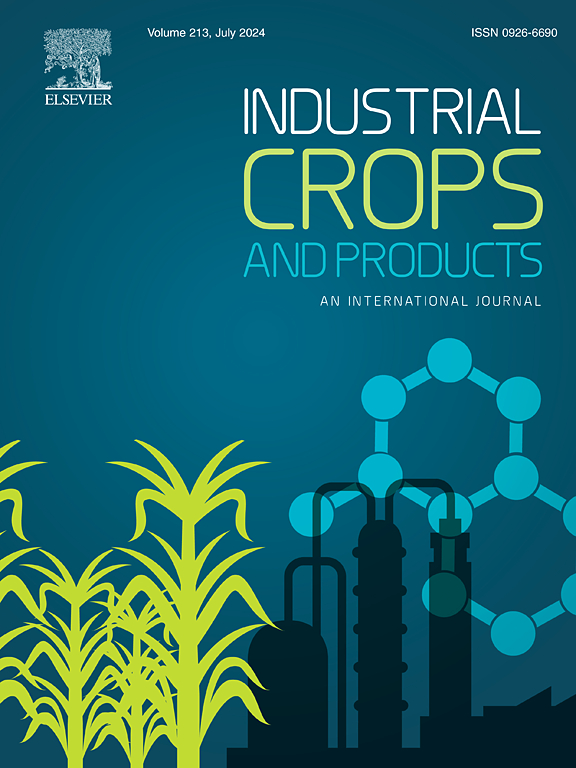Efficient fractionation of castor stalk by subcritical water hydrolysis and hydrated deep eutectic solvents pretreatment
IF 5.6
1区 农林科学
Q1 AGRICULTURAL ENGINEERING
引用次数: 0
Abstract
Hemp-derived castor stalk constitutes a promising lignocellulosic resource for biomass refining, attributed to its chemical composition being remarkably similar to that of hardwood. This study introduces a novel cascade fractionation strategy integrating subcritical water hydrolysis (SWH) with hydrated deep eutectic solvents (HDES) treatment, aiming to optimize the fractionation of castor stalk. In the initial step, SWH conducted at 180 °C for 30 min achieved significant xylan removal (76.2 %) and xylo-oligosaccharides (XOS) yield (63.6 %). Under optimal conditions (140 °C, 3 h, choline chloride/ethanolamine with 40 % water), the HDES treatment resulted in a delignification efficiency of 60.5 %. The resultant cellulose-rich pulp was efficiently converted into glucose with an enzymatic saccharification yield of 93.4 %. Notably, this cascade fractionation process enabled the recovery of uncondensed lignin at a yield of 57.3 %, while preserving up to 80 % of β-O-4 bonds. Furthermore, the lignin fractions could be readily assembled into lignin nanoparticles via an in-situ solvent exchange approach. The efficient cascade fractionation, which integrates SWH and HDES treatments, effectively decomposes and utilizes biomass. This combines approach enhances economic viability and environmental sustainability by maximizing the yield of valuable products and minimizing waste.

求助全文
约1分钟内获得全文
求助全文
来源期刊

Industrial Crops and Products
农林科学-农业工程
CiteScore
9.50
自引率
8.50%
发文量
1518
审稿时长
43 days
期刊介绍:
Industrial Crops and Products is an International Journal publishing academic and industrial research on industrial (defined as non-food/non-feed) crops and products. Papers concern both crop-oriented and bio-based materials from crops-oriented research, and should be of interest to an international audience, hypothesis driven, and where comparisons are made statistics performed.
 求助内容:
求助内容: 应助结果提醒方式:
应助结果提醒方式:


